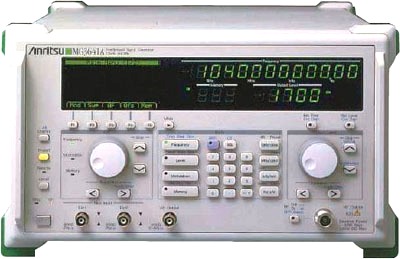
|
|
The Anritsu MG3641A 1040 MHz Synthesized Signal Generator's synthesizer technology permits frequency to be set with a resolution of 0.01 Hz across the full frequency range. And the nonharmonic spurious is better than –100 dBc for reliable measurement at any frequency. A unique low-noise YIG oscillator produces a high-purity signal with SSB phase noise of better than –130 dBc/Hz (1 GHz, 20 kHz offset) making these signal generators for interference testing of radio receivers and as sources for various local and reference signals. A stable signal with an output of +17 dBm can be output across the full frequency range to drive a variety of local signal sources and power amplifiers. In addition, an overdrive level up to +23 dBm can be set so as to make full use of the internal amplifier capability. In case the amplifier’s output power comes up to the limitation and output power does not reach the set value, a status message is displayed. This is useful for confirming the output limits. Up to three internal AF signal sources can be incorporated by adding options to the standard sine-wave oscillator (1 kHz, 400 Hz). The AF synthesizer (Option 21) is a digital synthesizer for generating sinewave, triangular, square and sawtooth waveforms; it can also be used as a function generator in addition to a modulation signal source. In addition to permitting simultaneous one route AM and two routes FM modulation, the modulation factor and polarity can be set independently. High-speed pulse modulation (Option 11) is possible using an external modulation signal (TTL level). The output can be used for various burst signals with an ON/OFF ratio of more than 80 dB, as well as a pseudo-random signal for radar. Specifications. Range: 125 kHz to 1040 MHz. Resolution: 0.01 Hz. Accuracy: Reference oscillator accuracy; reference oscillator accuracy ±(0.3% of FM setting deviation + 5 Hz) at frequency modulation Internal reference oscillator. Output Range: –143 to +17 dBm (settable range: –143 to +23 dBm). Option 01: Reference oscillator. Option 11: Pulse modulator. Option 21: AF synthesizer. Option 22: FSK encoder.
|